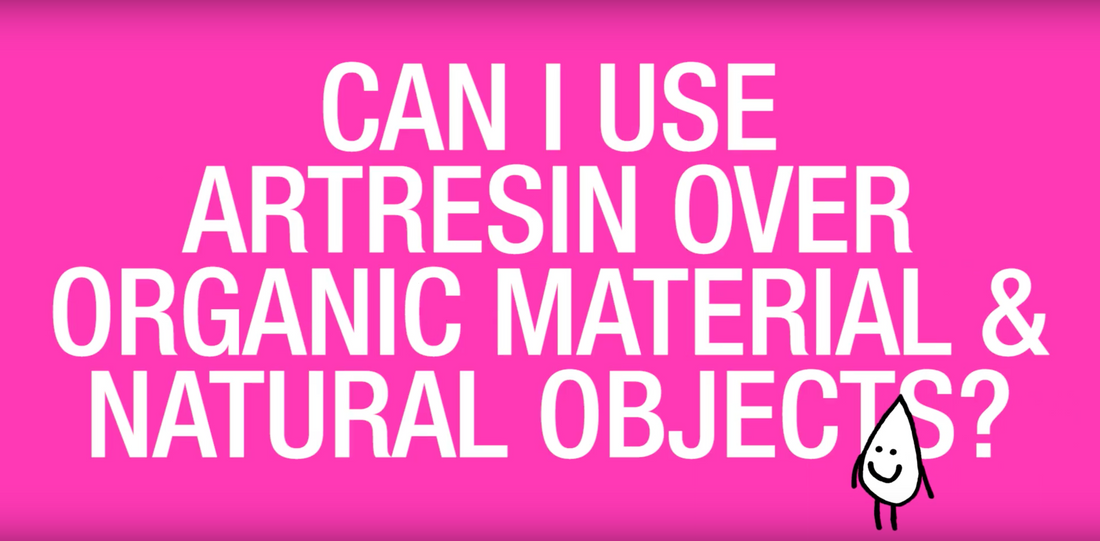Some important points:
ArtResin will make the colours look darker, as they would when wet
if you want to test this out how they'll look, use a little water over top to see how the colours change (usually it's for the better!)
Some natural objects need to be sealed
Some organic material, such as wood, can contain trapped air which can de-gas into the ArtResin in the form of bubbles as it's curing. To prevent this, use a sealant over the surface first to create a barrier to prevent air from escaping.
Read more about sealing before resining.
Make sure natural objects are dry
Whether you resin over natural objects, it's important to make sure they're thoroughly dry first. Moisture causes wood to expand and contract which could cause the resin to crack. When it comes to leaves and flowers, you want to make sure these are completely dry, or else they may rot under the resin.
💡 TIP: Place leaves and flowers in silica gel for to completely dry them out.
Use caution when pouring and spreading over delicate areas of your artwork -
Be aware that resin is thick and can be heavy if a large amount is used over delicate objects such as butterfly wings. Because of this, you may wish to apply the resin in thin coats.
As always, we always suggest testing on a non-masterpiece first just to make sure you get the results you want before you move on to your final project!
Learn about other materials you can use ArtResin on.
Do you want to read more about using ArtResin epoxy resin? Get informed with our guides below:
- How To Use ArtResin
- How To Apply Epoxy Resin
- Can I Use Epoxy Resin On Fabric
- Can I Use Epoxy Resin As A Glue
- Why Should I Use Support Blocks When Using Epoxy Resin
- Can I use Epoxy Resin Over Paper?
- Can I Embed Objects In Clear Resin?
- Can You Put Epoxy Resin On Polymer Clay?
- Can I Use ArtResin To Make Coasters & Hotplates?
- How To Use 10 Gallon Pro Bulk Kit
ArtResin: Made For Artists By Artists

